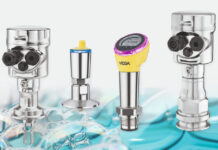ONE of the images we all have in mind are the increasing number of wildfires all over the world, the other is the contamination of soil and water through the forever chemical Fluorine, which has been an integral part of firefighting foams for decades.
In general, the following applies: holistic, preventive and defensive technical fire protection not only offers lasting safety, but also protects people, property and the environment.
FireDos has seen its mission in the design and manufacture of more efficient extinguishing systems by innovation for decades. This has always been a guiding principle in preventive and defensive fire protection. And thanks to durable technologies and innovative developments, it not only protects lives and property, but also makes the planet safer in the long term.
With each industrial, residential, and natural fire thousands of environmental toxins are released and spread over square kilometres in the air as well as in the ground. Any damage analysis will show the connection between fire protection and environmental protection.
Not only smoke, damaged property and fire residues can have a negative impact on the environment, but also substances used in firefighting.
These include halon extinguishing agents, which since 1991 may only be used in exceptional cases as well as Fluorine, that has been used in firefighting foams since the 1970s. Extinguishing water can also contribute to environmental damage by washing pollutants into the soil and groundwater.
In general, there is a lot of discussion about how harmful extinguishing agents can be to the environment – but too little about how much environmental damage is prevented when extinguishing systems are used successfully.
In principle, the earlier and more successfully a fire is fought, the less its effects will be.
At present, the selection for a specific firefighting system is still predominantly based on two criteria: efficacy and costs – the latter unfortunately often is the determining factor for the ultimate decision. Considering the growing focus on ESG principles this must change.
Why does FireDos consider Fire Protection as Environmental Protection?
During the development phase of its foam proportioners one of the focal points of FireDos was the question on how the product can help reduce the environmental impact.
On one hand this will be during the manufacturing process, on the other it will be looking at the firefighting aspect itself.
Following a range of examples for fire protection being environmental protection.
- Longevity of the product: All FireDos products are designed and manufactured in a way that will assure a longevity of the product paired with a minimum requirement for maintenance.
-
- ISO 14001 – Reduction of the carbon footprint: Besides being ISO 9001 certified, FireDos has been ISO 14001 certified since 2001.
- Purely mechanical – no requirement of external power: The purely mechanical concept of the FireDos proportioner consists of a water motor and a piston pump, featuring absolute functional safety.
- Foam concentrate return when testing the mixing rate: Fire extinguishing systems must be tested regularly to ensure their functionality in case of fire. The same applies for the proportioning system.
Wherever you look, environmental protection and sustainability are moving up on many agendas. And that is a good thing.
But if you really want to move ahead, you must start immediately, find holistic solutions, and apply them consistently.
And thanks to the availability of long-lasting technologies and innovative developments, it not only protects living beings and property, but also makes the planet safe in the long term.















